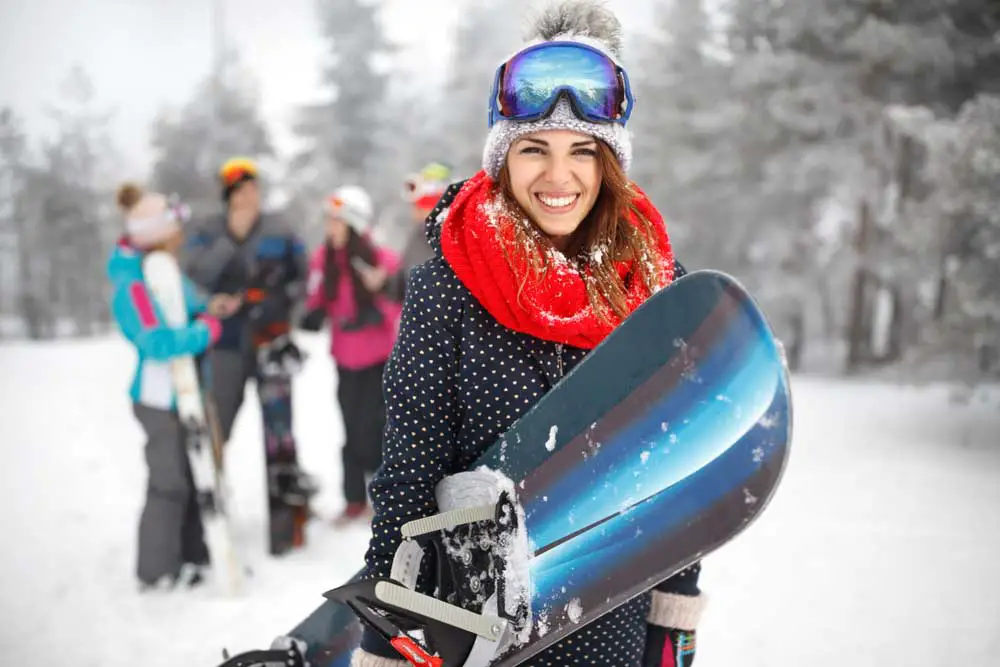
Snowboarding is one of the coolest winter sports in the world.
Although it’s typically favored by youngsters, don’t be discouraged from trying it out regardless of your age. Whether you’re a kid, teenager, or even an adult, you should never back down from learning a new skill or sport.
Age isn’t an issue for snowboarding, especially, when all you need is tenacity, patience, and the willingness to learn.
After all, it’s all about having fun in the snow, shredding the hills, and doing your best, no?
But, starting out without any guidance isn’t particularly easy, so in order to facilitate the early stages of your snowboarding journey, we asked the experts for advice that we could share with beginners, and here is the information they provided!
1. Wear Protection
One of the most important aspects of learning a new sport or gaining a new skill is taking additional protective measures (especially, while you’re still familiarizing yourself). Wearing wrist guards and some lacrosse shorts can provide you with additional protection to your joints, hips, thighs, crotch, etc.
These safeguards might not seem important right away, after all, we all like to believe our skills are going to be “good enough” on our first try. But, the reality is that the first few days of any extreme sports involve falling down constantly.
Wiping out too often can feel discouraging, especially after the injuries begin to hurt, and it can actually hamper your willingness to learn. But, the protection provided by the additional gear will cushion these blows and will help you feel more comfortable with the idea of trying again.
Pro tip: Always wear a helmet, regardless of your experience level!
2. Wear Comfortable Gear
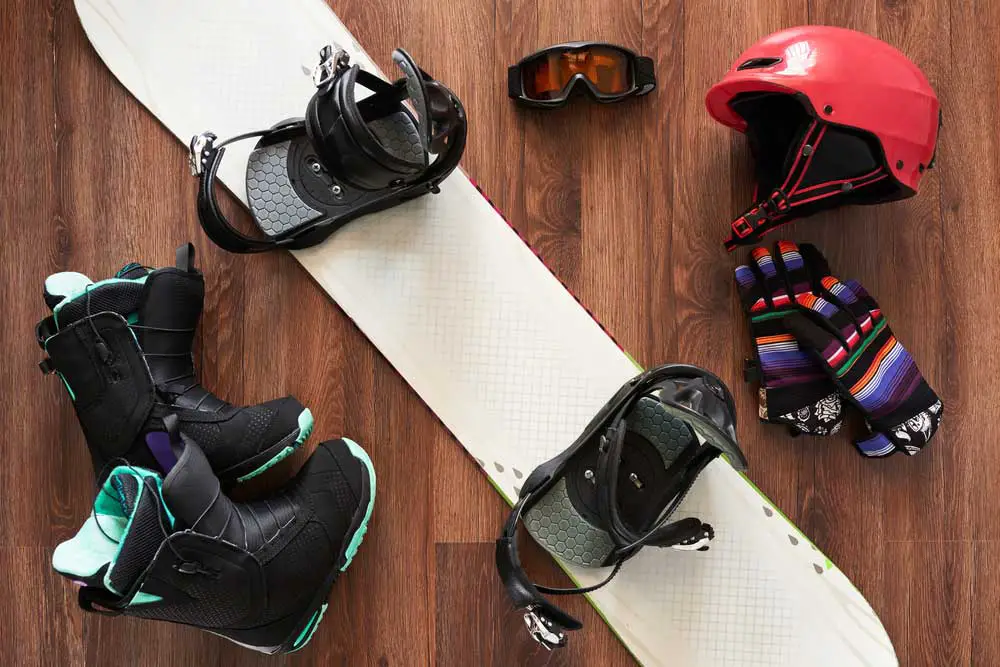
Snowboarding boots, accessories, snow pants, and a few warm layers of clothes will make or break your trip to the mountains. Snow boots, though, are extremely important; take additional measures to ensure they fit your feet comfortably without being too snug in the front or the heel (you’ll need this space in order to adjust your feet as your turn).
You might think that it’s just a simple pair of shoes, but remember you’re going to be spending a large part of the day wearing them and if they become painful to wear after a little bit, imagine how bad it is going to feel when you’re using them all day long. For that reason, we recommend trying them out beforehand by spending some time in one of the nearby shops and walking around a bit with a pair you’re interested in buying (just don’t forget to put them back or pay for them after you’re done).
On that same note, a good pair of socks will also make the difference. Try not to use multiple pairs of socks as these can build pressure up and even make your boots feel tighter than they should. Consider investing in some snowboard socks as they’re made specifically for the sport, additionally make a conscious effort to avoid cotton ones, which can absorb too much sweat and feel uncomfortable after a long day of perspiration.
But, speaking of uncomfortable gear, make sure you invest properly on a solid pair of waterproof gloves. Falling down means your gloves will constantly be hitting the snow; a solid pair of them will stay dry and keep you warm even if you’re always digging yourself out of the ground.
3. Learn to Skate on One Foot
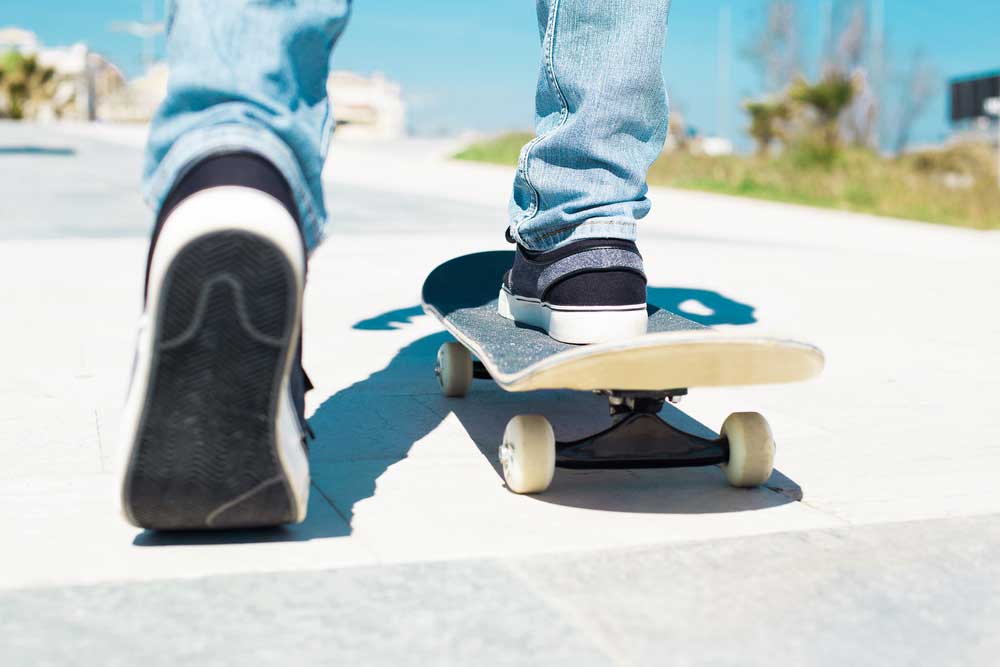
Part of the snowboarding experience includes getting on and out of lifts. What most newbies won’t know though, is that they’ll be doing this with only one foot strapped to the board. Therefore, learning how to skate (or slide on one foot) is a crucial step at the start.
However, the lift isn’t the only point where it’s useful to skate as it will also speed up moving through small hills or flats that would substantially require more effort to navigate if you walked them instead.
To skate you’ll strap your front foot into the binding of the board, and then push yourself with your other foot mimicking the movement of a skateboarder on a skateboard (hence the term “skate”).
4. Goofy or Regular?
Snowboarders use their own terminology, when it comes to the sport, the difference between a goofy or a regular depends on whether they’re left or right foot dominant. You see, in snowboarding you’re going to be looking over your shoulder as you go downhill. If your left foot is forward, then you’ll be looking over your left shoulder and that means you’re a regular. On the other hand, a goofy will be looking over his right shoulder and have his right foot leading the way.
Pro tip: You can figure out this information easily, even if you’ve never even seen a snowboard in your life. Stand in a boxing position and whatever leg is forward will be your leading foot. Alternatively, have someone push you from behind, and whatever leg you use to regain your balance is your dominant i.e. forward leg.
5. Take Some Lessons from a Professional Instructor
We understand, it’s easy to get eager, and certainly, you’ll want to try out the slopes as soon as possible. However, there are huge benefits to taking lessons before starting out. Even doing one day of lessons will yield better results than diving into snowboarding blindly!
For example, you’ll learn about:
- Proper technique like adequate posture, positioning of your knees, etc.
- The proper method of entering the lift
- How to fall if you tip over i.e. not trying to catch yourself
Plus, your instructor should be able to provide you with insight to any deficiencies you might have, and provide you with guidance on correcting them.
6. Don’t Jump Straight into the Harder Challenges
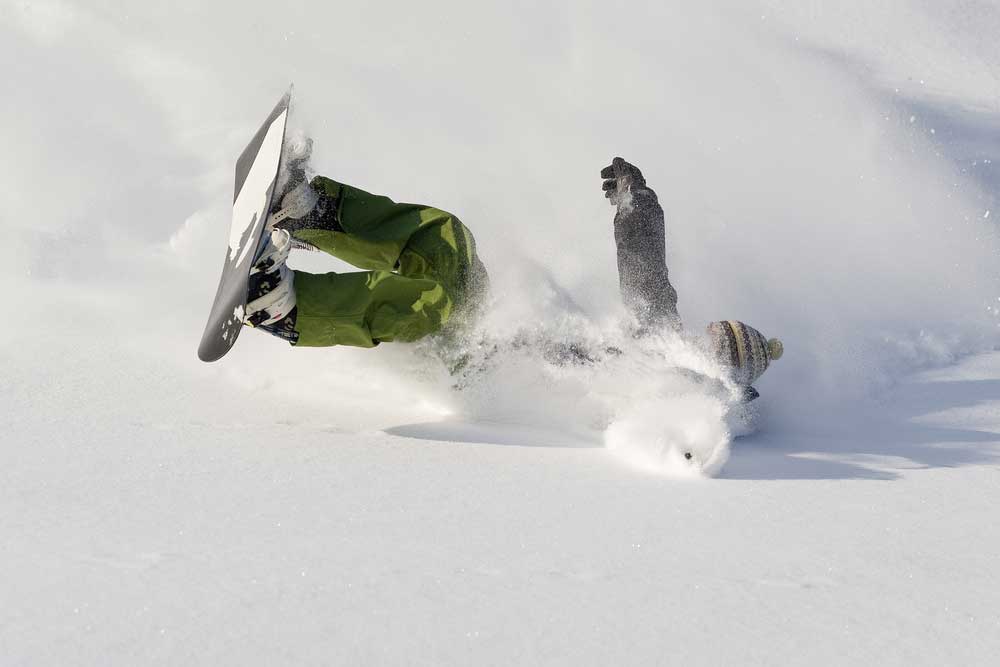
With time and experience, you’ll one day be able to tackle even the hardest of slopes, but if you’re literally just starting out… then avoid riding in icy/hard conditions or tough slopes. Trying to ride in hard snow is extremely difficult for beginners, and it’s best to hit the slopes when they’re slushy and powdery.
You see, powdered snow is the best possible kind of snow, as it requires less effort to carve a path through it.
You’ll also notice that more experienced boarders tend to follow the trails left by others, and that’s because they recognize that the snow has been paved for them in those paths. It would behoove you to pick up on those unspoken rules whilst you’re learning.
But, once you’ve become a bit more experienced, try carving your own path through the snow, you’ll discover a whole new world of possibilities.
Pro tip: Always check the weather conditions of the area you’re going to snowboard in, as this will tell you if it’s appropriate or not for you to start.
7. Keep Your Eyes on the Prize

One of the most important things you should remember in life is “your eyes will guide you to where you want to go”. This rule also applies to snowboarding, whatever direction your eyes are going, your body will follow (unconsciously or consciously). The reason for this is because we tend to shift our weight towards the direction our eyes are looking.
The way it works is like this:
Head ß Shoulders ß hips ß snowboard
Basically your head directs the weight/lean of your shoulders, followed by your hips, which pursue the shoulders, finally the legs and board will follow those.
Pro tip: Avoid looking at the floor or the snow. There is an old adage that says “look down, and you’ll fall down” or something along those lines. The saying holds true for snowboarding, so keep that in mind.
8. Use the Bunny Slope for Familiarization of the Basics
The bunny slope is a term used for an easy hill that is suitable for young children and inexperienced riders. But, there are some disadvantages to spending too much time in it.
Namely, the huge amount of beginners riding in it that particular slope, which means they’ll be boarding straight into each other, riding erratically, and falling down at random times. You can’t avoid them all and you’re very likely to crash into someone else who is riding into your lane at the worst possible time.
It’s extremely frustrating to finally get some speed going, only to run into a small child and cause someone else’s vacation to turn into a nightmare. For that reason, we advocate using the bunny slope sensibly, but not to overstay your welcome in it.
Pro tip: A good time to move along from the bunny slope is once you have a comfortable sense of balance and turning, also knowing how to brake helps.
9. Speed and Control
Momentum is going to be your best friend while on a snowboard. When you’re gaining speed and traction, you’ll notice that turning and maintaining stability are a lot easier.
Even snowboarding on a flatbase (an area of the slopes where your snowboard is sitting flat instead of on the edges) becomes easier at higher speeds, and trust us, those are some of the most challenging areas to tackle for the average snowboarder.
10. Turning Requires Movement of Your Heels and Toes
The first time you take a turn while snowboarding you’re probably going to fail. But, don’t feel too bad as it tends to happen to everyone at least once.
You see, the typical newbies will try to lean towards a turn, only to realize that nothing is happening because the board is not turning with them. To remediate that, you need to push hard on either your heels or toes depending on the direction you want to turn.
Turning is definitely one of those things that require practice, as you’ll have to learn how to shift the weight while going downhill at the same time, and while reading and getting some insight into the concept does help… nothing beats personal experience.
11. Avoid Sunburn and Chaffed Lips
It’s extremely easy to get sunburnt while hitting the slopes because snow reflects UV light into your body. Your lips on the other hand will become dry and chapped because of the cold, dry winter air.
To avoid these, wear some sunscreen on your body, and bring some lip balm that can be stored in the pockets of your jacket so you’re never left unprotected from the forces of nature. Your body will thank you for it the next day.
12. Make a Plan for Yourself
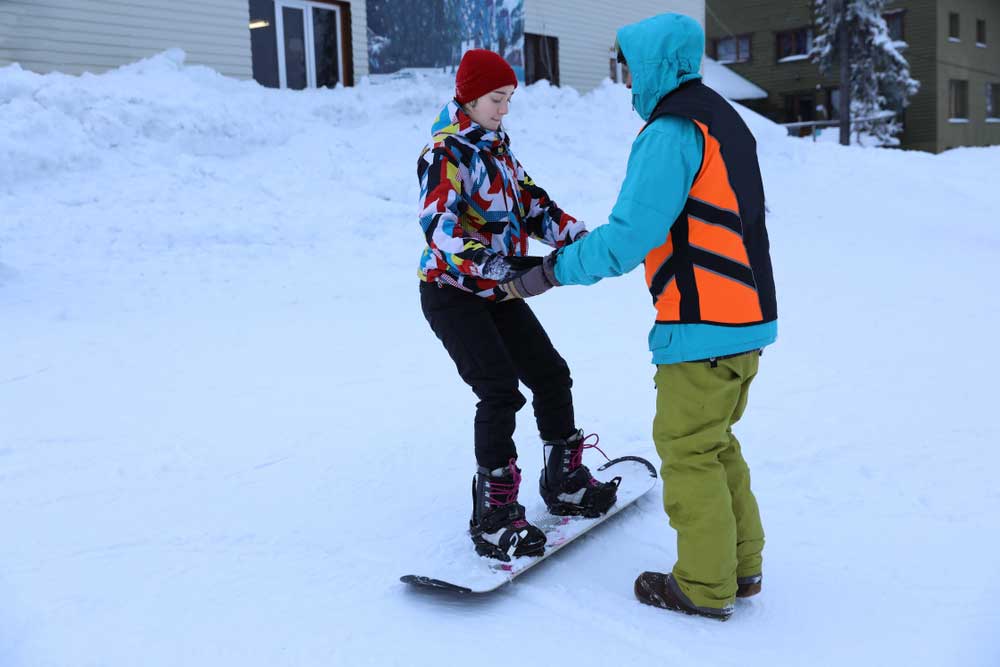
Learning how to snowboard is a marathon not a sprint. What that means, is that you’re going to want to take things slowly, but surely, instead of trying to overreach and giving up because you didn’t succeed.
For that same reason, you’re better off making a list of the stuff you want to master, and write it down on a piece of paper, but make sure you keep each goal realistic.
Something along the lines of:
- Mastering balance
- Learning how to skate
- Becoming comfortable with turning
- Learning how to perform small jumps
This is only an example of something that can be achieved within a weekend at a resort. But, you can make yours as simple or as complicated as you’d like. It all depends on your specific goals and whether you intend to become a master shredder or a casual fan of the sport.
Yet, regardless of your intentions with snowboarding, having a clear and achievable goal in mind will help you stay motivated in pursuing it.
13. Have Fun!
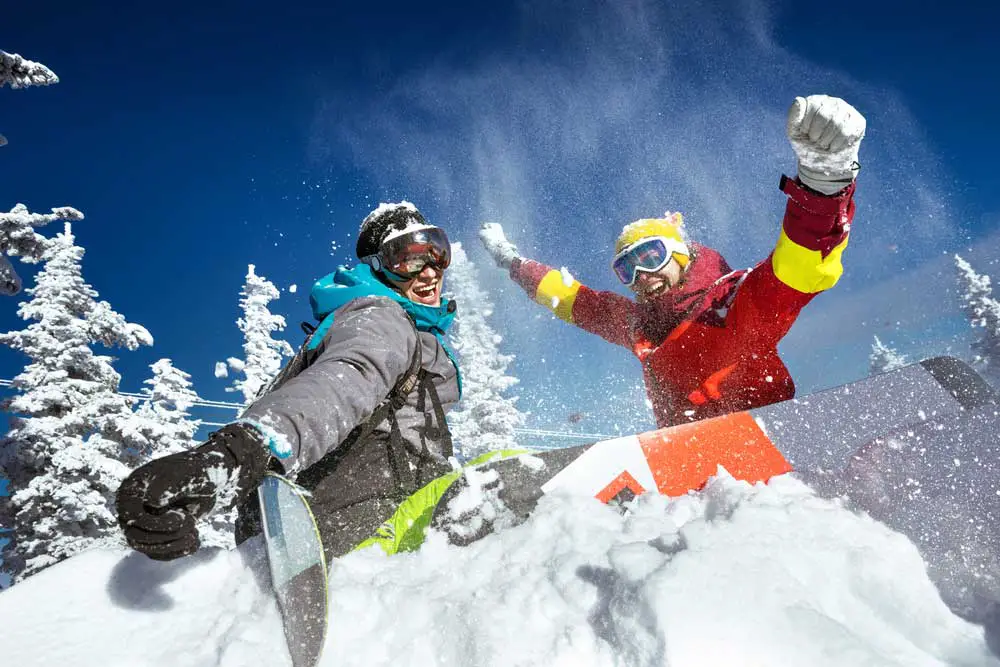
No matter how fast or slow you pick up on snowboarding; nothing matters more than having fun while doing it. You’ll not only learn faster than you would if you weren’t enjoying it, chances are that even if things go downhill (or your derriere hits the floor), you’ll still have a good time.
At the end of the day, enjoying yourself is what matters the most, after all snowboarding is an extreme sport. By definition, it’s there to give you an adrenaline rush, make you look cool, and provide you with plenty of exciting memories. As long as you’re happy, you should have a positive experience up on the mountain trails.
Snowboarding is awesome; there is no doubt about it. But, learning takes time and practice. When you hit the slopes for the first time, make sure your gear is comfortable and that you’re properly protected. This will avoid potential injuries that can harm your overall experience.
Take the few minutes required to figure out if you’re a goofy or a regular and make sure you practice skating so you can get on/off the lifts. You’ll want to take some lessons before you start out if it’s your first time snowboarding, and definitely avoid jumping into high difficulty challenges before you even get your bearings straightened out. You’ll avoid heartbreak in the long run.
By keeping your eyes towards the direction you want to go, you’ll avoid moving in a different direction than the one you’re pursuing, and remember that the bunny slope is good for beginners, but it is normally too congested to gain some proper experience.
Speed and control will help you turn on a dime, but keep in mind that you should use your heels and toes to do it properly. Furthermore, falling down or crashing into others aren’t the only hazards on the slopes, you also have to watch out for the UV rays of the sun and a mean case of chaffed lips. Make sure you keep some sunscreen and lip balm handy to avoid the pain of these two threats.
Finally, remember to make a progression plan for yourself that will keep you pursuing your goals, and still allows you to have fun as you shred some powder downhill at high (or slow) speeds! You can never lose as long as you have a good time.
